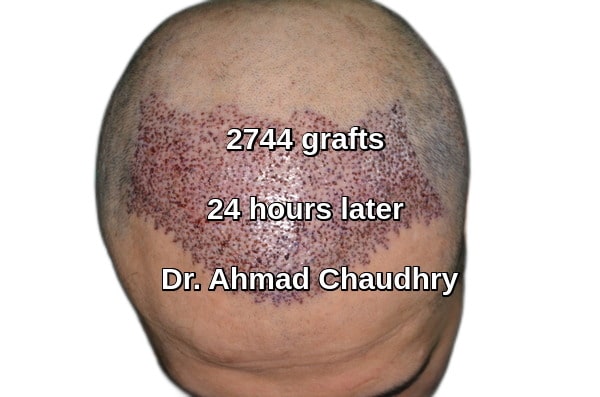Choosing your shampoo after hair transplant, the procedure signifies the beginning of a journey to restore growth on bald area. Still, proper aftercare is equally important to ensure a successful outcome. A pivotal element in this aftercare regimen is choosing the right product. This simple yet crucial step can make a significant difference in the final results of your procedure. Caring for your newly transplanted graft is a vital part of the restoration journey. While many factors contribute to the success of a surgical procedure, one essential aspect often overlooked is the care during the recovery phase. Choosing the right shampoo after hair transplant ensures your scalp remains clean, irritation-free, and conducive to hair growth.

First wash 24 hours later
Why Does Your Choice of Shampoo Matters After a Hair Transplant?
One might question why a special shampoo after hair transplant is necessary. Following the procedure, the scalp becomes a highly sensitive area prone to irritation and infections if not cared for correctly. Follicles transplanted into the scalp need an optimal environment to anchor themselves and proliferate effectively. Using harsh chemical containing product can cause unnecessary inflammation, leading to discomfort and potentially disrupting the growth process.
A specially formulated product is designed to be gentle, non-irritating, and soothing for the scalp. It should have a hypoallergenic formulation that will keep your scalp clean without causing any discomfort. Such products often contain ingredients like aloe vera, chamomile, or tea tree oil, known for their soothing, anti-inflammatory properties.
Shampoo to use after hair transplant
Following a surgical procedure, it’s important to choose a shampoo that will be gentle on your scalp and promote the health and growth of your new follicle. Based on the preferences of specialists, here are some recommendations:
1. Baby Shampoo: This is often the first recommendation doctors. It is gentle, hypoallergenic, and free of harsh chemicals, making them an excellent choice immediately after a procedure.
2. Nizoral (Ketoconazole): This is an antifungal lotion often recommended for use a few weeks after the transplant. Ketoconazole can help prevent fungal infections and also has anti-inflammatory properties. It’s typically used once or twice a week.
3. Shampoos Containing Biotin: Biotin is a vitamin that’s essential for hair health and growth. A product that contains biotin can support the health and strength of your new strand.
4. Salicylic Acid: These can help with any flaking or crust that forms after the transplant. However, they should only be used after the initial healing process (at least a week after the surgery) and under the advice of your doctor.
5. Sulfate-Free: Sulfates can be harsh on the scalp and follicle. After a transplant, your scalp will be more sensitive than usual, so a sulfate-free is a safer choice.
6. Balanced pH: The scalp has a naturally slightly acidic pH. Using a product with a similar pH (around 5.5) can help maintain the health of your scalp and newly transplanted follicle.
7. With Natural Oils: Certain oils, such as argan oil and jojoba oil, are known to support hair health. Shampoos containing these oils can be a good choice.
8. Hypoallergenic: To avoid allergic reactions and skin irritation, it is preferable to use a hypoallergenic. Remember, everyone’s scalp and follicle are unique, so what works best for one person may not work as well for another. It’s always a good idea to discuss options with your doctor or a specialist to find the best product for your specific needs.
Factors to Consider When Buying:
Finding the right shampoo after hair transplant requires careful consideration. First, ensure it is sulfate-free. Sulfates can strip the scalp of its natural oils, causing dryness and irritation, which are detrimental to newly transplanted follicles. Next, consider the pH level. Our skin and scalp naturally have a slightly acidic pH, which helps maintain the skin’s protective barrier. Using a product with a similar pH level (around 5.5) can help preserve this barrier and prevent dryness and irritation. Lastly, look for ingredients that promote health and growth. Biotin, keratin, and natural oils like jojoba and argan oil can nourish the scalp and support the health of both your existing and newly transplanted graft.
Conclusion:
While the procedure is a significant step towards regaining your full thickness, the aftercare process is just as critical for successful results. A major component of this aftercare is using a gentle, nourishing shampoo after hair transplant. This simple act of washing can make all the difference in the world, fostering an optimal environment for your new graft to grow and flourish. Remember, a good recovery product is more than just a cleaning product. It’s a part of your new graft journey, supporting the growth and health of your transplanted follicles. So, choose wisely and look forward to embracing your new hair with renewed confidence.
People also search
| Hair loss treatment for men | 2644 grafts before after |
Need help | Call or WhatsApp |+923334309999

